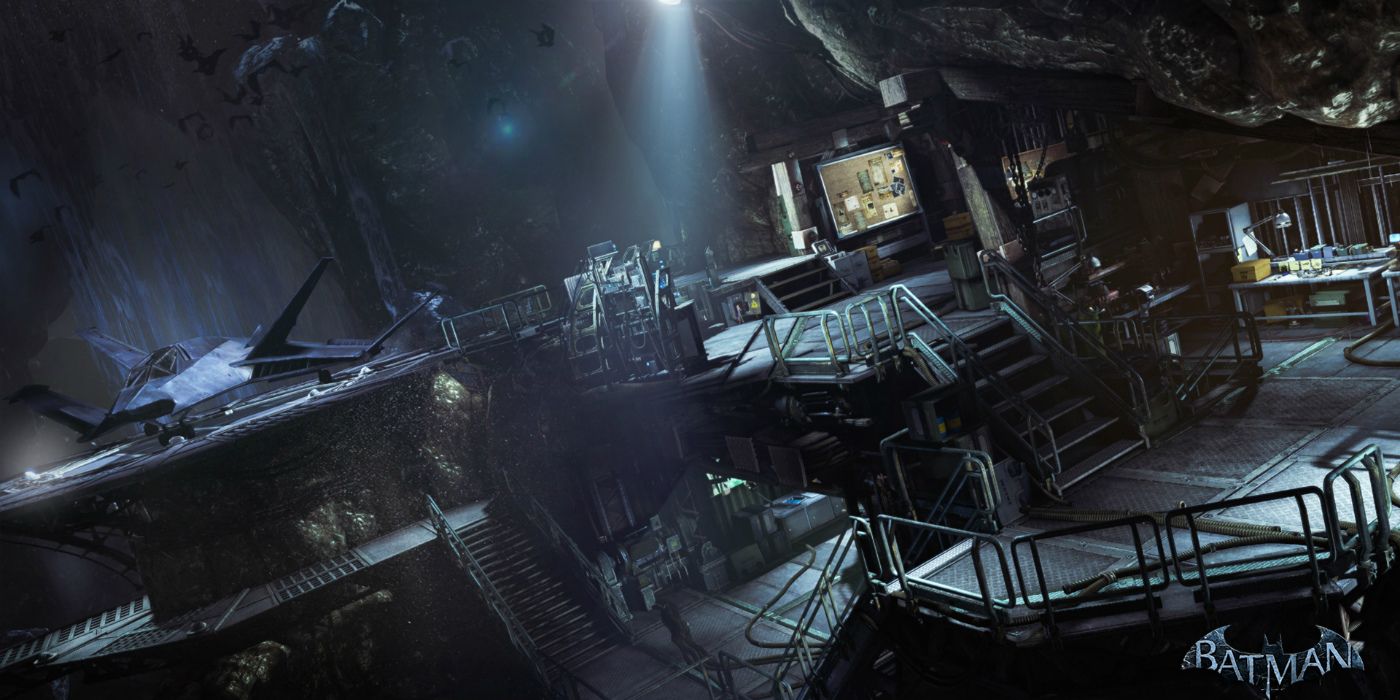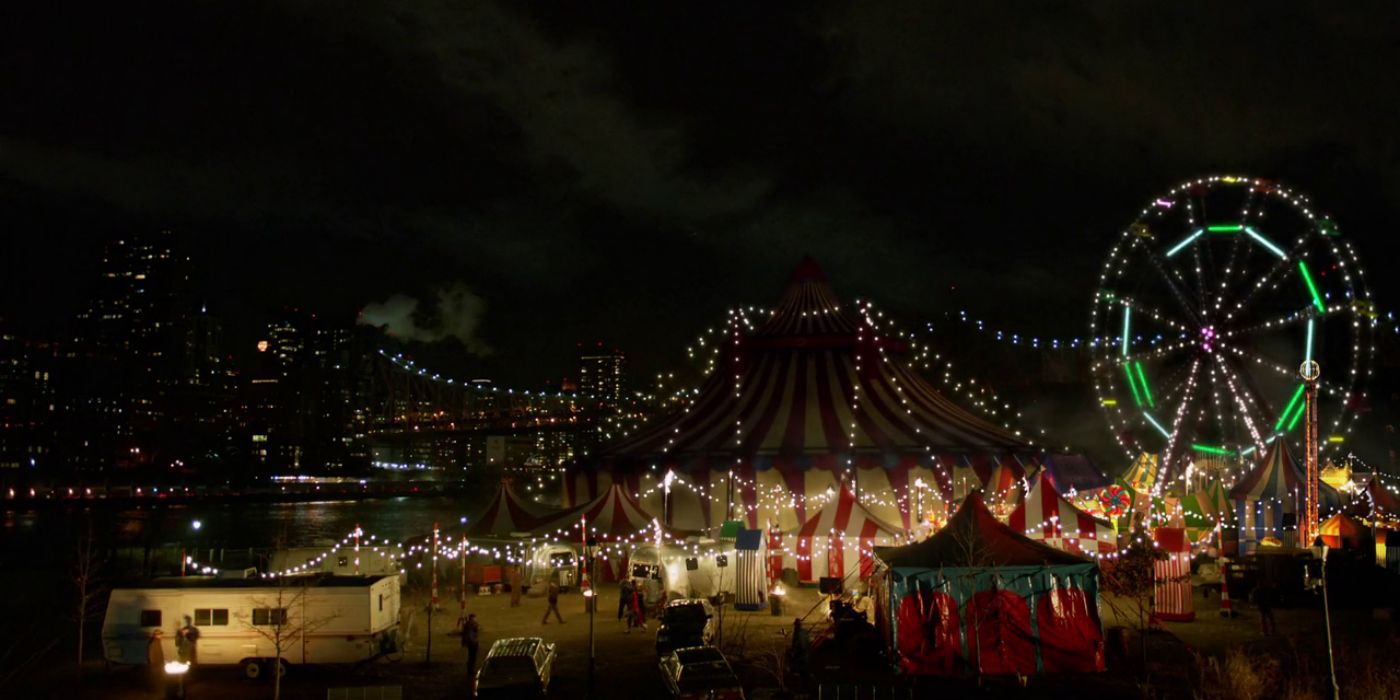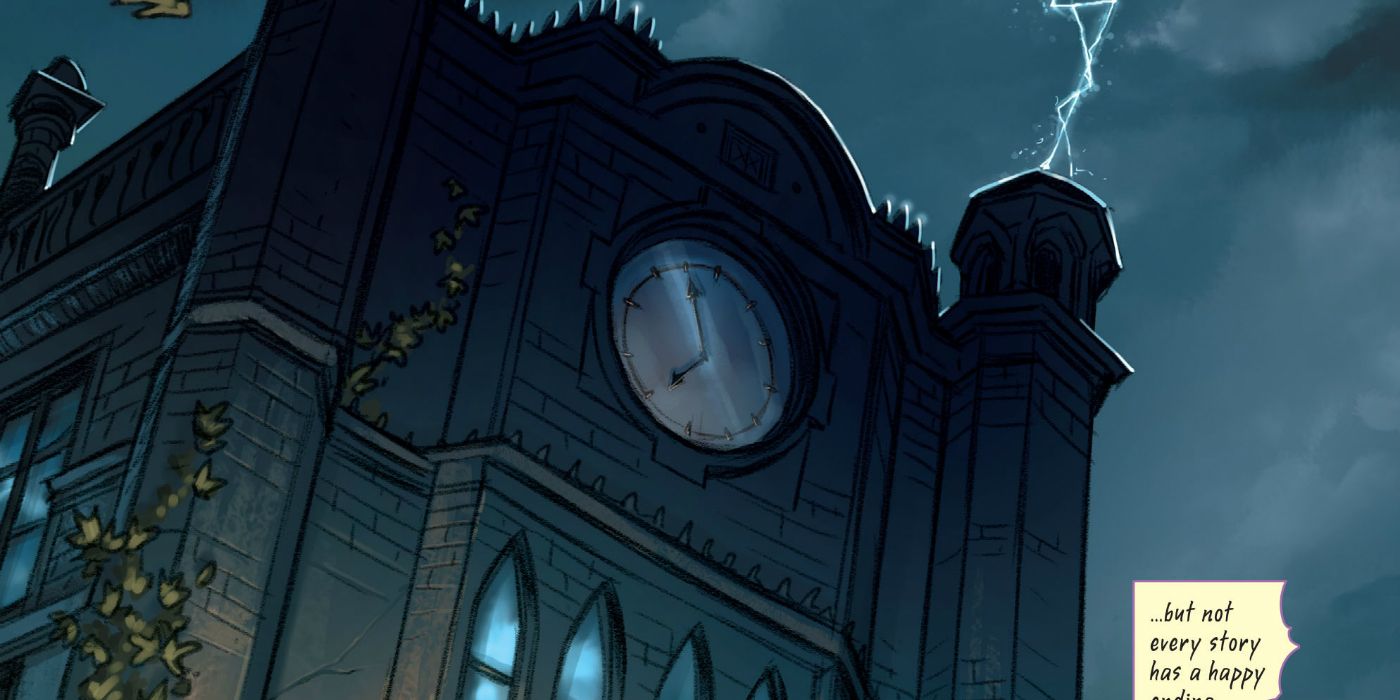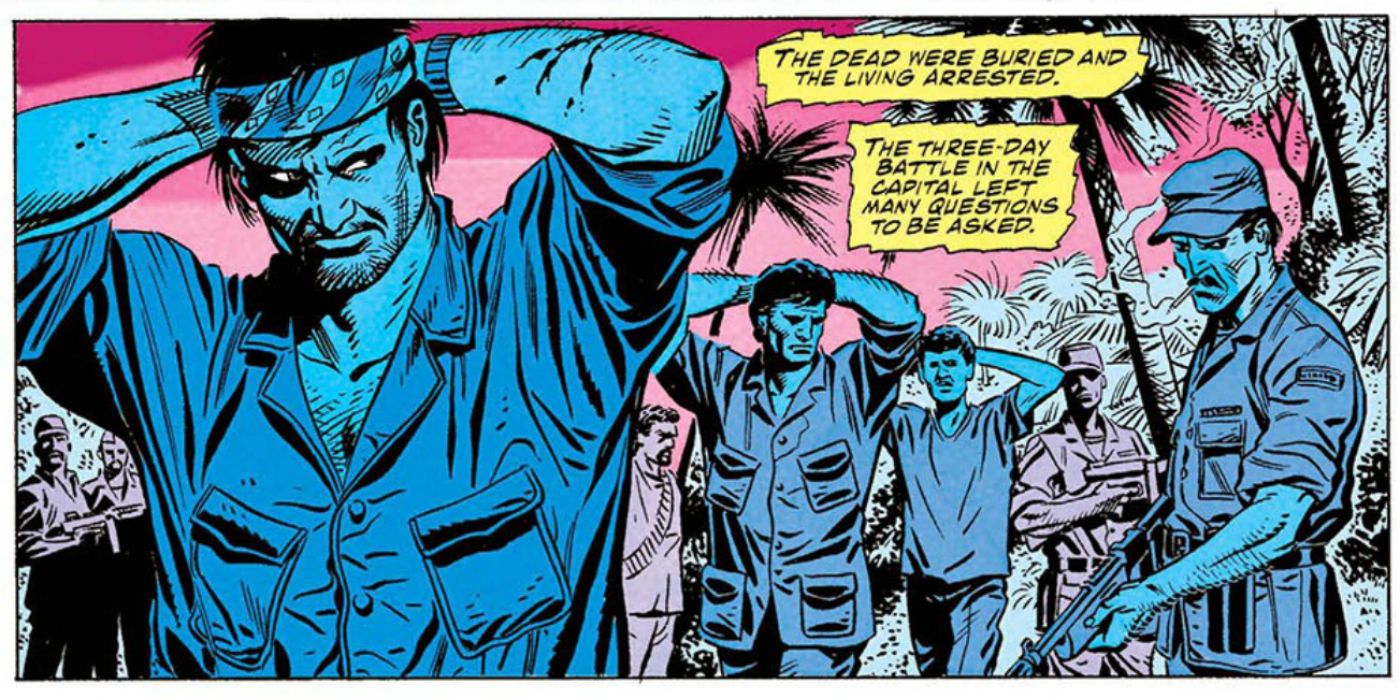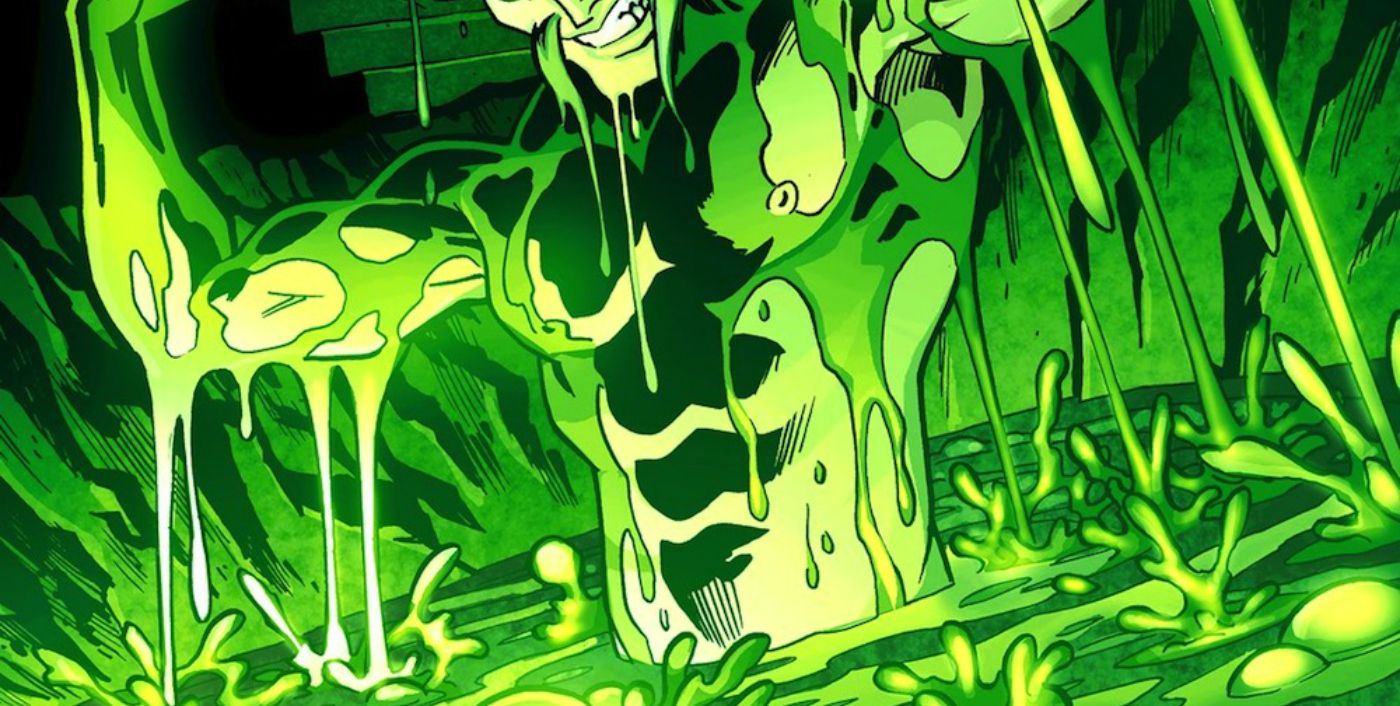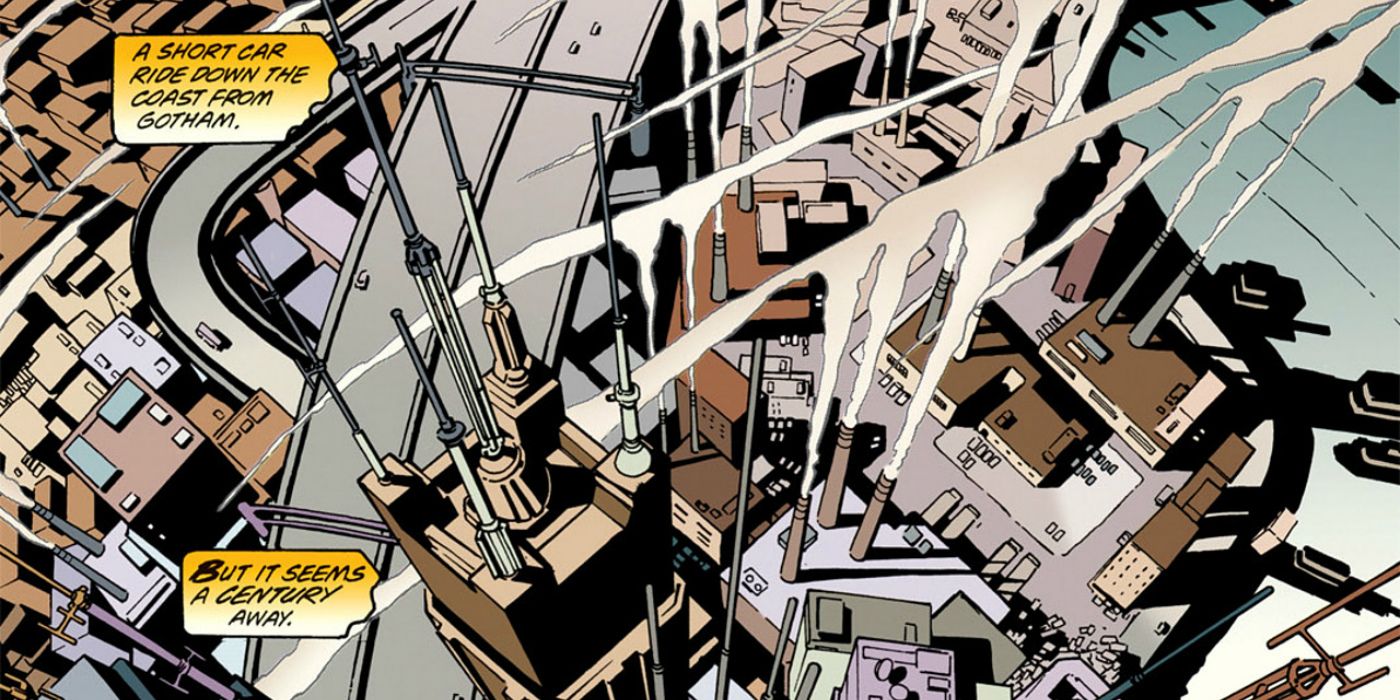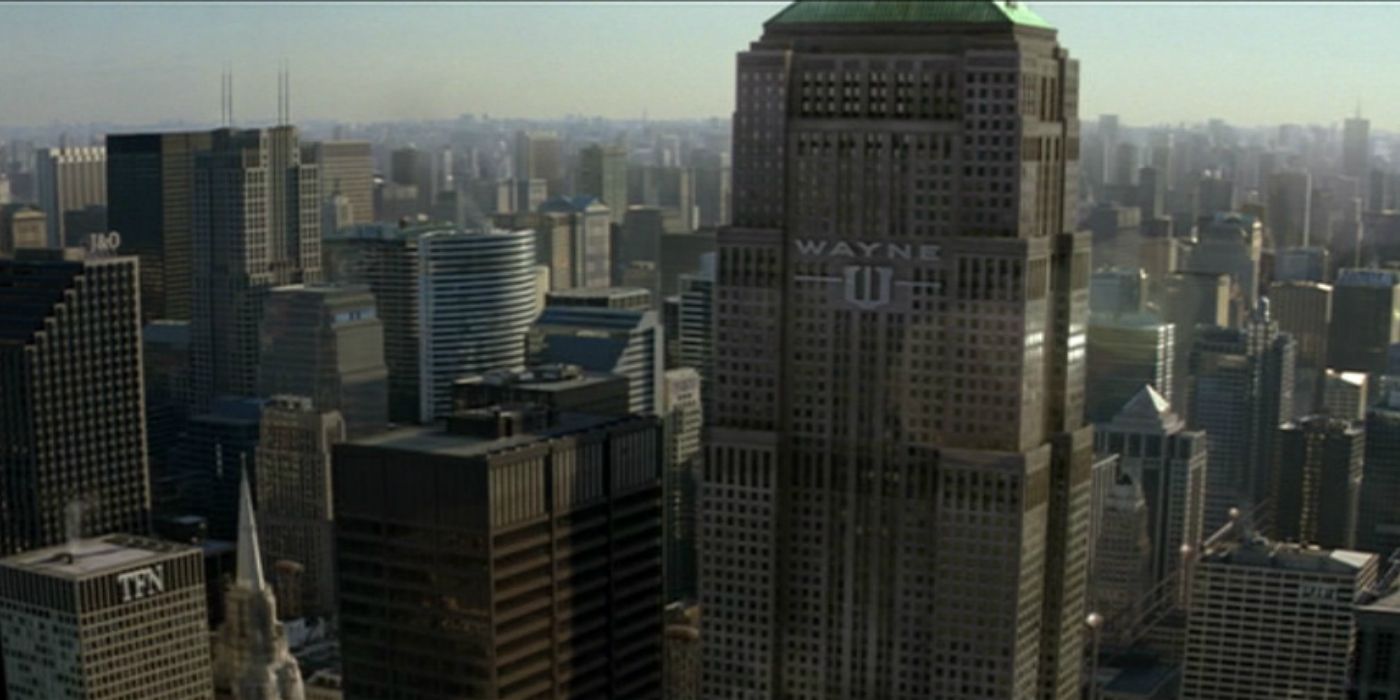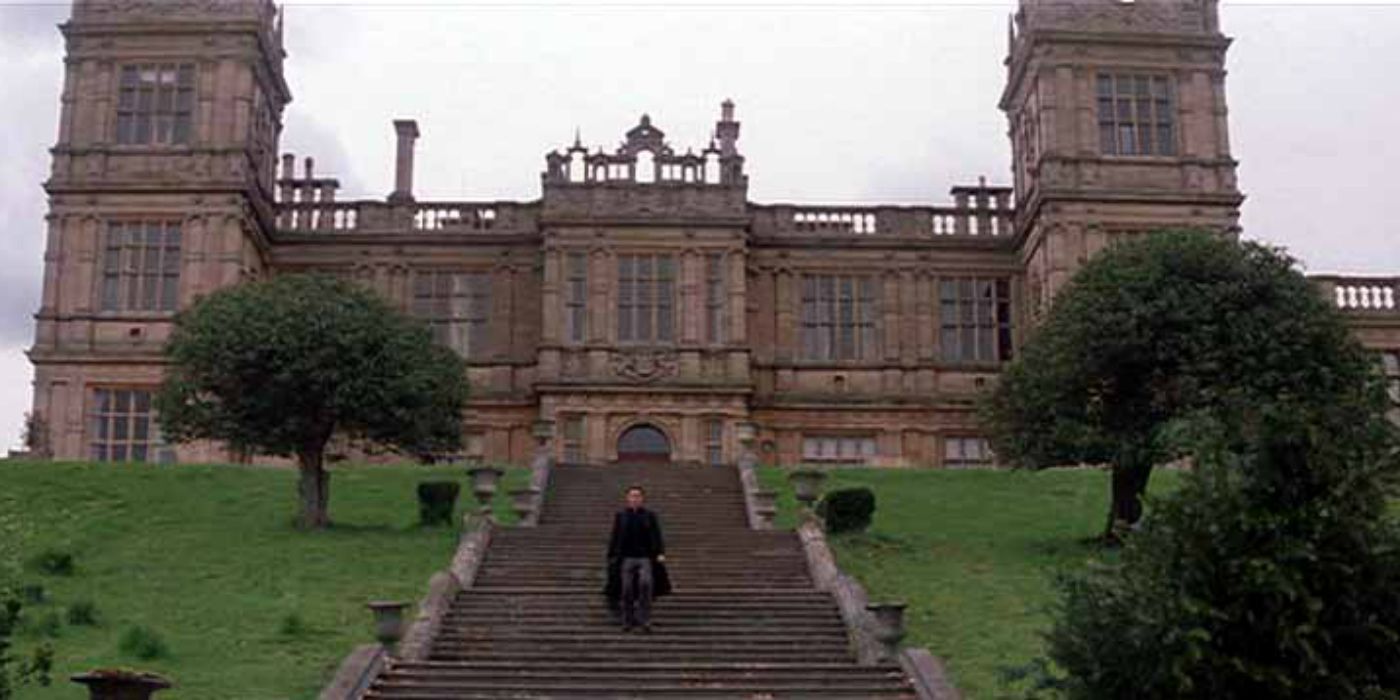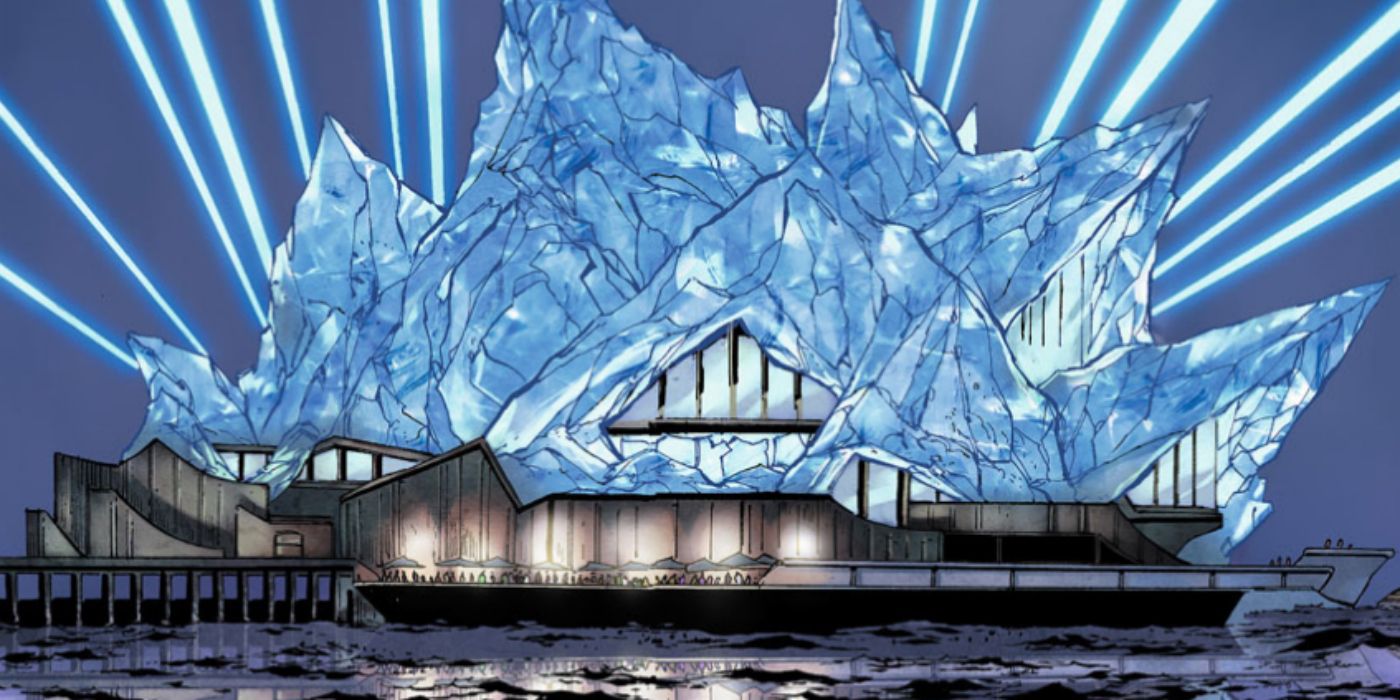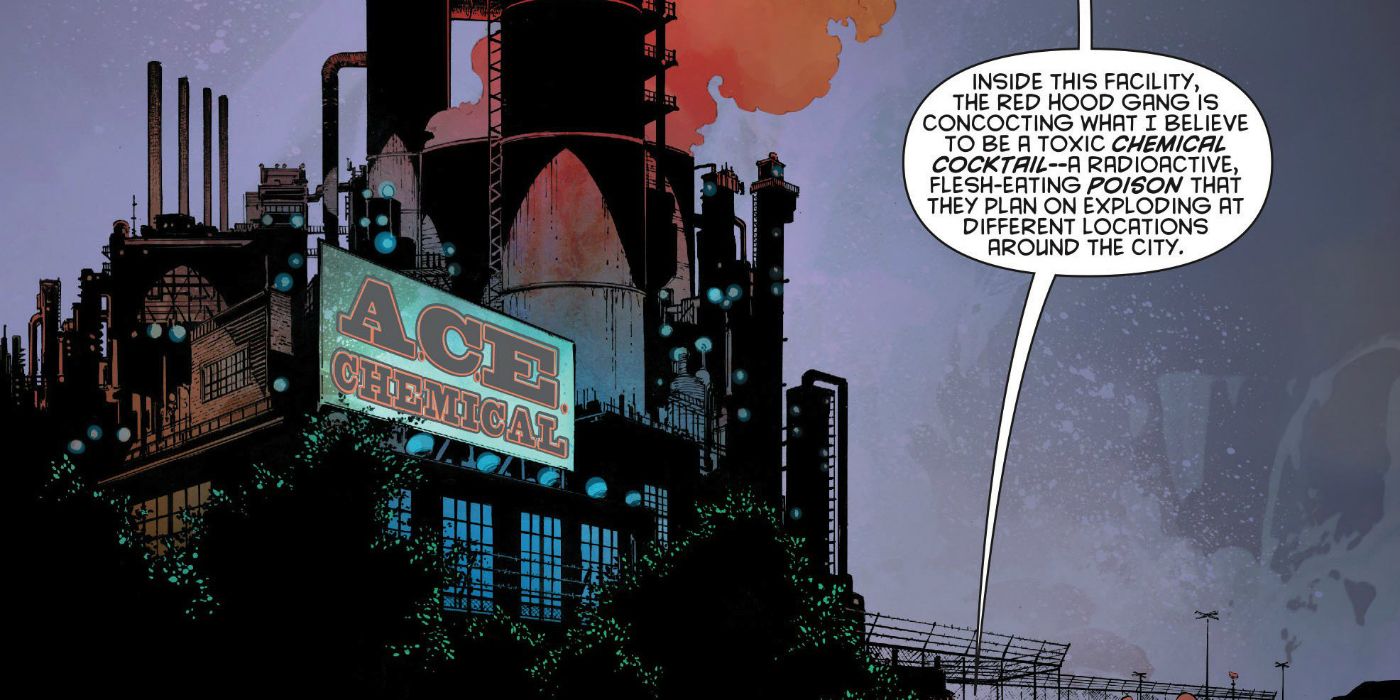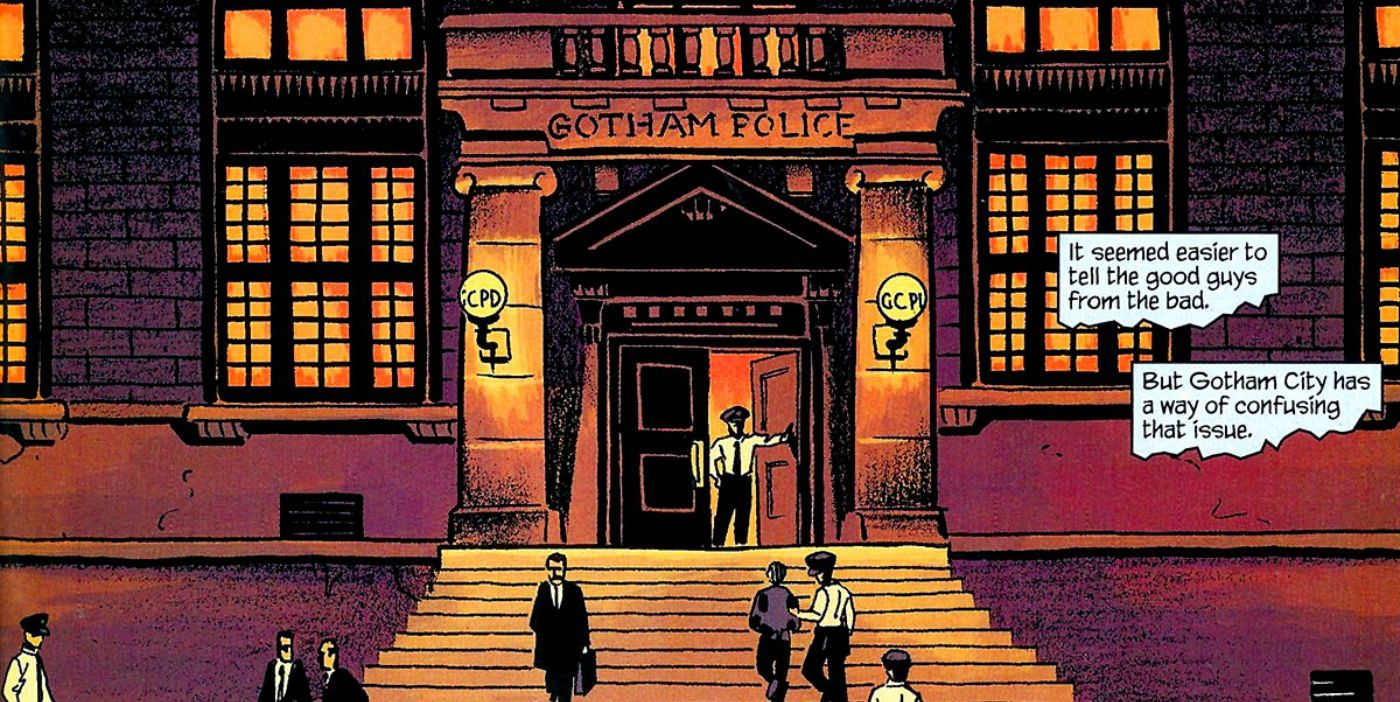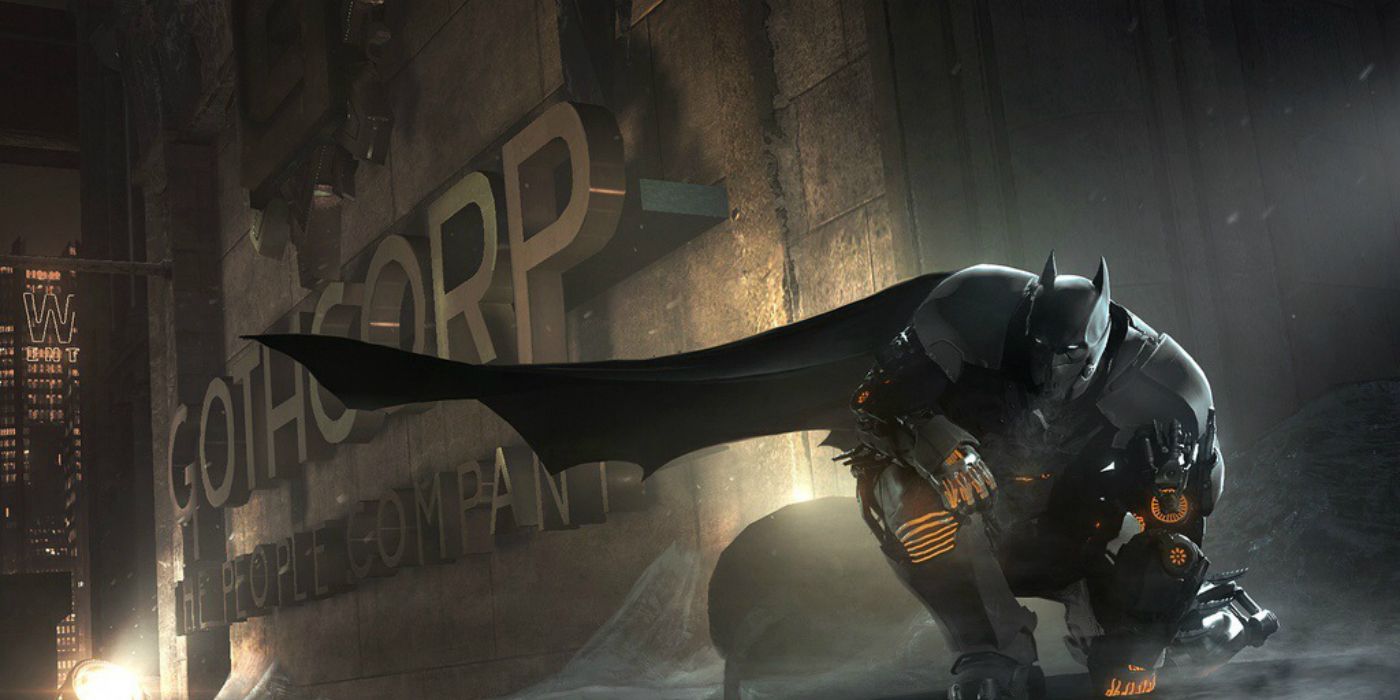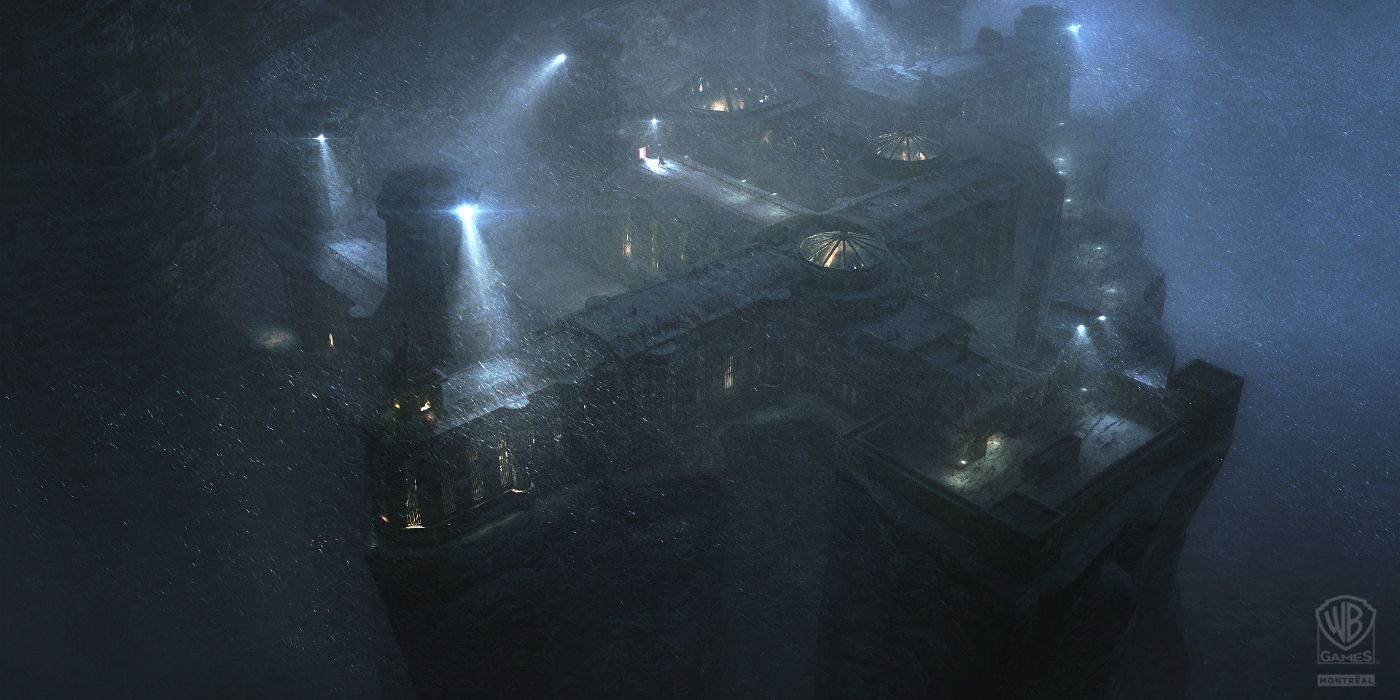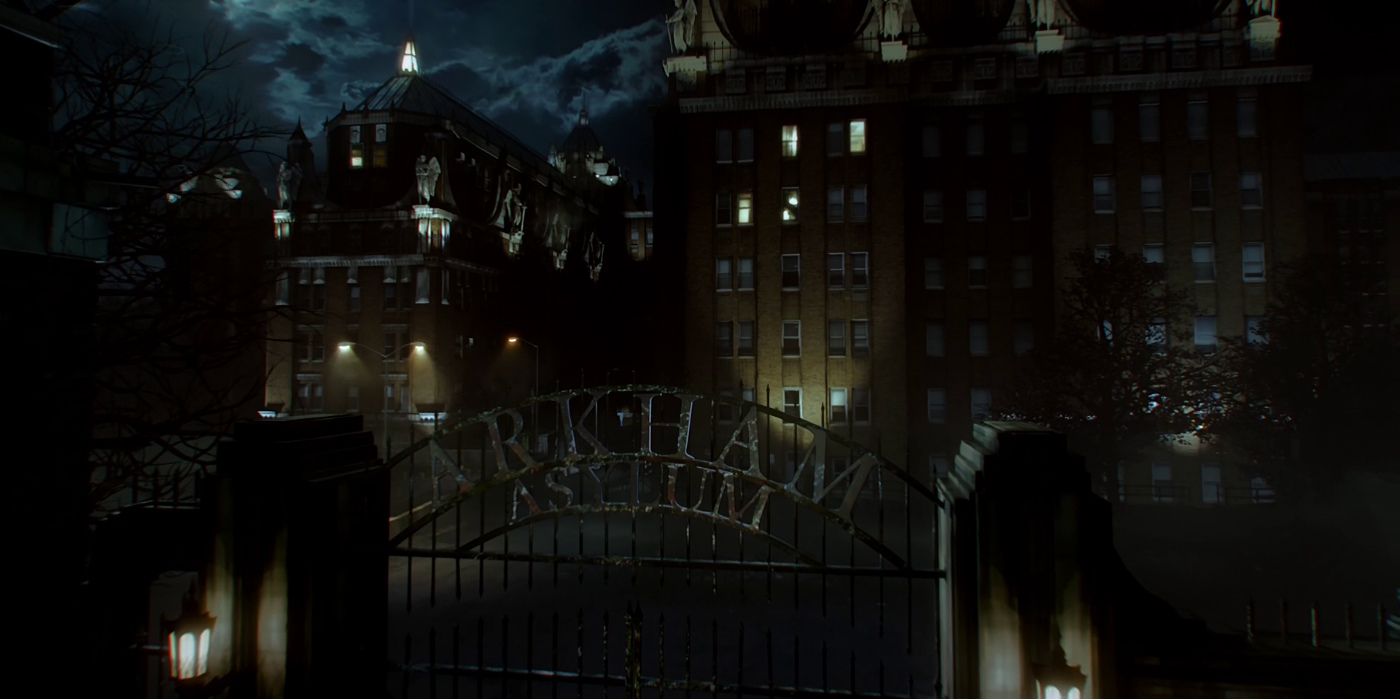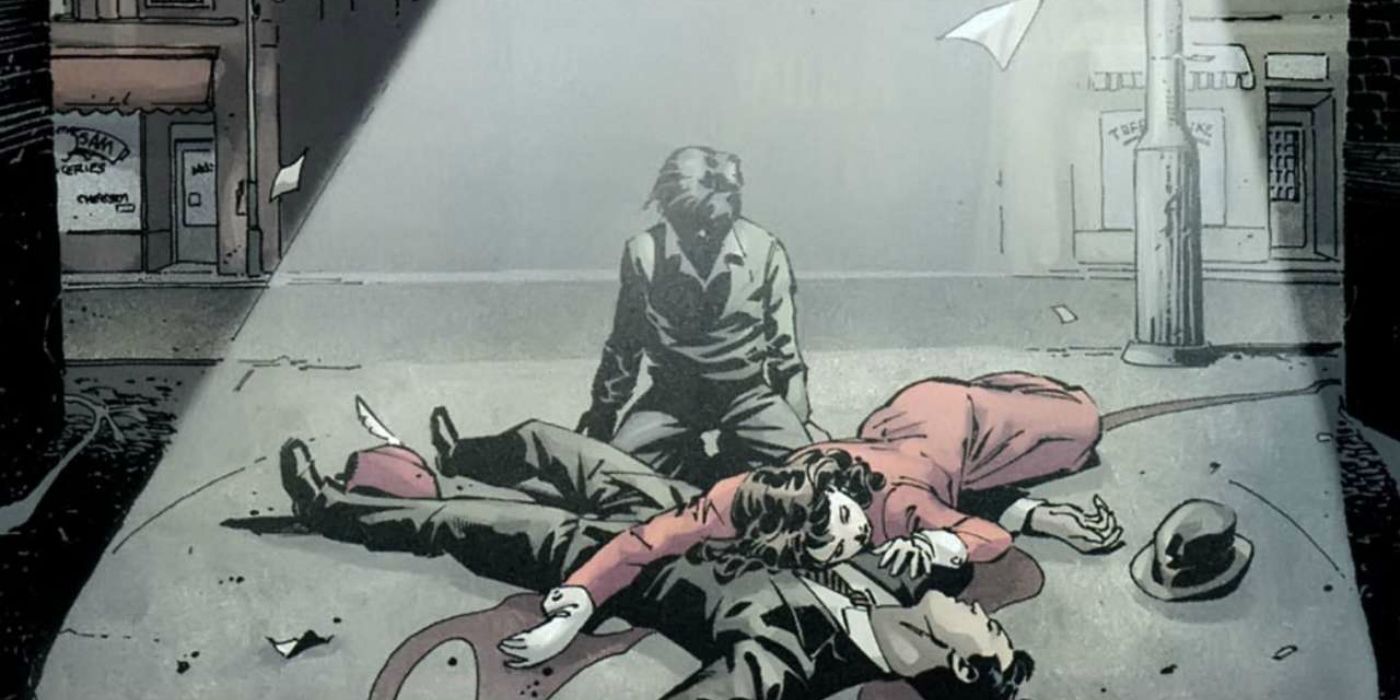Batman lives and works mainly in Gotham City, where he's best known, and it's the most important city in the world to him. With all the different areas and neighborhoods in Gotham, he has his hands full, but Batman doesn't just stay in one city. He's a world traveler, crossing the globe to fight crime wherever it lies.
RELATED: Batfleck Forever: 15 Ways He Can Make A Great Batman Movie
Batman has traveled the world in his nonstop battle against evil, but there are a few places inside and outside of Gotham that stand out for him as special. Some locations have a sentimental value, and others are places he keeps coming back to over and over again. With the solo movie "The Batman" still in development, the team at CBR is here to run down the 15 most important places (other than Gotham City itself) to Batman.
15 HALY'S CIRCUS
C.C. Haly and Norton Brothers Circus (most commonly known as "Haly's Circus") was first seen in 1940's "Detective Comics" #38, published in 1940, drawn and written by Bob Kane (with assistance from Bill Finger). Haly's Circus is a traveling circus that brings joy and fun around the world, but its arrival in Gotham is what brought it to its important place in Batman's history.
Haly's Circus was once the place where Dick Grayson and his parents, known as the Flying Graysons, performed their trapeze act. After trying to blackmail the circus owner, gangsters poured acid on the ropes of the trapeze. During the following performance, this sent the older Graysons plunging to their deaths. That led to Bruce Wayne taking in Dick Grayson, who went on to become Robin. More recently, it was revealed that the deadly Court of Owls had been manipulating Haly's Circus to groom Grayson as their new assassin, Talon.
14 GOTHAM ACADEMY
Gotham Academy is a private and elite boarding school in Gotham City, located right near the infamous Arkham Asylum, which we'll cover later. The Academy was the focus of an ongoing series in 2014 written by Becky Cloonan and Brenden Fletcher, and drawn by Karl Kerschl. "Gotham Academy" focused on Olive Silverlock, a student whose mother was a supervillain named Calamity, and her friends and enemies throughout the school.
Batman was a presence in the series, more by implication than appearance, although he did show up at times. He was responsible for capturing and putting Calamity in Arkham Asylum, and (as Bruce Wayne) gave speeches at the school and provided a scholarship for Silverlock to attend Gotham Academy. His son, Damian Wayne, also attended the school starting in issue #7, but was expelled pretty quickly because he's, you know, Damian. And if you didn't know, Damian is the current Robin and has, shall we say, a bit of an anger issue.
13 SANTA PRISCA
Santa Prisca is a fictional country located in the Caribbean with a Latin American influence. It was originally created by Denny O'Neill for "The Question" #10 in 1987, penciled by Denys Cowan. The island has been a hotspot of chaos with political unrest and corruption, made even worse by a thriving drug trade, so it's definitely not a vacation spot.
The island became important to Batman when the supervillain Bane was introduced in "Batman: Vengeance of Bane" #1 (1993), written by Chuck Dixon and pencilled by Graham Nolan. Bane was the son of a revolutionary who was sentenced to life in prison but escaped, so Santa Prisca sentenced Bane to serve his father's term instead. During his imprisonment, Santa Prisca began experimenting on Bane with the drug Venom, giving him superhuman strength. With his new power, he escaped and tried to take over Gotham City. As the birthplace of one of his greatest enemies, Santa Prisca has a dark place in Batman's heart.
12 THE LAZARUS PITS
Around the world, there are many Lazarus pits, but they all hold the same huge impact on Batman's life. The Lazarus pits are naturally occurring pools of a green substance from beneath the Earth's crust that only comes to the surface at key points around the world. When someone old, sick or even dead is submerged in a Lazarus pit, the liquid heals and restores them to health. It also drives the subject temporarily insane.
The first Lazarus pit appeared in "Batman" #243 (1972), written by Dennis O'Neil and penciled by Neal Adams, where it was used to bring the supervillain Ra's al Ghul back to life. That's how the Lazarus pits became trouble for Batman, because the pits can usually only be used once, leading the ancient Ra's al Ghul to kill and enslave in his quest to use more pits to keep him alive. The pits were also used to bring Batman's former sidekick Jason Todd, the second Robin and current Red Hood, back to life. Batman and Bane supposedly destroyed all the Lazarus pits, but they still keep popping up.
11 BLÜDHAVEN
Is it possible for there to be a city more crime-ridden than Gotham City? The answer to that is yes, and its name was Blüdhaven. Blüdhaven made its debut in Chuck Dixon and Scott McDaniel's "Nightwing" #1 (1996), when some corpses from the city washed into Gotham. Nightwing went to investigate, and discovered the police over there were just as corrupt as the mobsters, leading him to move to the town and start his own crime-fighting campaign.
The 'Haven was once a thriving industrial city until the Depression left it a blighted mess. During 1999's "No Man's Land," where Gotham City was devastated by an earthquake, Blüdhaven became a relative sanctuary until Gotham was rebuilt, and the 'Haven went back to being crap. It didn't get any better when the supervillain Chemo caused an explosion that left Blüdhaven quarantined and toxic. When Darkseid used the 'Haven as a base in 2008's "Final Crisis," the city was finally destroyed, and the world may be better off without it.
10 WAYNE ENTERPRISES
As any Batman fan knows, Bruce Wayne is able to finance his vigilante career because he's a billionaire. Some of that money came from his wealthy parents' inheritance, but a lot of it is from his company, Wayne Enterprises. In "Batman" #307 (1979), Len Wein and penciler John Calnan first introduced the huge global conglomerate, which has also gone by the names Wayne Industries and WayneTech. The company is one of the largest in the world with branches in dozens of countries, but has its base in Gotham City's Wayne Tower.
Wayne Enterprises is run and chaired by Bruce Wayne with a little help (or a lot of help, depending on his caseload) from his business partner, Lucius Fox. Together, they handle a collection of companies that handle everything from manufacturing weapons and cars to importing oil and even running a TV station. Wayne Enterprises also builds some of the fantastic weapons and vehicles Batman uses, allowing Wayne to keep his utility belt well-stocked. Hey, batarangs aren't cheap.
9 WAYNE MANOR
Sometimes, even Batman needs to relax and unwind, which is why Wayne still has his "stately Wayne Manor." Wayne Manor is a sprawling mansion located outside of Gotham City, and has been in the Wayne family for generations. Introduced in the original "Detective Comics" stories, the house has been a part of almost every version of Batman since the beginning.
Wayne Manor is a huge and luxurious house that fits Wayne's reputation as a billionaire, but it's much more than that. Cared for by his butler Alfred, it's the one place Batman can retreat to heal and recover from his adventures. It's also built on an underground network of caves, serving to enter and hide the entrance to the Batcave (which is coming up later on the list). The mansion has been destroyed, rebuilt and destroyed again many times, and sometimes Batman has even moved to live somewhere else, but he always comes back to Wayne Manor.
8 THE ICEBERG LOUNGE
Very few criminals have achieved a level of wealth and success as Batman's enemy, the Penguin. The Penguin is a master criminal and murderer, but he's successfully maintained a front for his organization in the form of a trendy nightclub called the Iceberg Lounge.
First seen in "Detective Comics" #683 in 1995 (written by Chuck Dixon and penciled by Graham Nolan), Oswald Cobblepot claimed to have reformed and opened the Iceberg Lounge to go straight. As long as you don't mind the low temperatures, it's a beautiful club with live music, real animals like seals on display and an ice-themed decor. It didn't take long for Batman to find out the Lounge served as a base where the Penguin could broker deals for stolen goods and information, and is where criminals like the Joker and Killer Croc hang out. Batman allows the Lounge to exist so he can infiltrate the club in disguise and find information.
7 ACE CHEMICALS
Another location most well-known for its ties to a single criminal is Ace Chemicals, the birthplace of the Joker. Making its first appearance in "Detective Comics" #168 (1951), the Ace Chemical Processing Plant would seem like your average generic chemical company, filled with huge vats of chemicals and a web of pipes. The difference came one night when a mysterious villain known only as the Red Hood was chased into the plant after a failed robbery attempt. The Red Hood fell into a vat of chemicals that permanently bleached his skin and turned his hair green, and came out as the Clown Prince of Crime, the Joker.
If it was just the place where the Joker was disfigured, Ace Chemicals might not be so important to Batman. However, it's really important to the Joker. He keeps returning to Ace Chemicals, whether it's to make more of his toxin, to hide out from the police or taunt Batman by reminding him of his role in the Joker's transformation.
6 GOTHAM CITY POLICE HQ
In the war on crime in Gotham City, Batman isn't always alone, thanks to Gotham City's thriving police force which is often overwhelmed, but still fights valiantly to try to stop the villains attacking the city. They're not all on Batman's side, but one in particular has his back: Commissioner Gordon. With the help of Gordon and the resources of the police department behind him, Batman is way more effective.
The headquarters of the GCPD is where Batman usually meets Gordon, especially when the building uses the enormous spotlight on its roof known as the Bat-Signal. When Batman sees his logo high up in the clouds, he comes flying to the GCPD, so he can get the report of what dangers Gotham City is facing. Criminals will also attack the GCPD specifically in order to make Batman come to them, and/or will strike headquarters to take out the police themselves. Whether they're on his side or not, Batman always protects the cops' HQ.
5 GOTHCORP
Wayne Enterprises isn't the only game in town. GothCorp is another huge company that's headquartered in Gotham City, but it's not as nice as Wayne's, not by a longshot. The company first appeared in "Batman: The Animated Series" in the 1997 episode "Heart of Ice" by Paul Dini and Bruce Timm, but continued to make appearances in other media like the comic books and video games such as "Batman: Arkham City."
GothCorp is run by Ferris Boyle, who claims to value people above all else with the slogan "The People Company," but in reality, he's a corrupt CEO who demands profit over everything. GothCorp came into Batman's radar when Mister Freeze went on a rampage against it for causing his condition. Victor Fries had been trying to cure his terminally ill wife, but Boyle tried to shut down his cryogenic experiments, causing an explosion that forced Fries to stay in subzero temperatures to survive. GothCorp continues to perform experiments and fund research that makes Batman's life much worse.
4 BLACKGATE PENITENTIARY
When Batman catches a bad guy, Blackgate Penitentiary is usually where they end up. Having made its first appearance in 1991's "Detective Comics" #629 (written by Peter Milligan and penciled by Jim Aparo) as Blackgate Prison, it's the biggest and most notorious prison in Gotham City, so Batman tends to spend a lot of time there either delivering prisoners or trying to keep them from escaping.
Anyone sane enough to stay out of Arkham Asylum ends up in Blackgate. Blackgate is an especially brutal prison, once condemned and forced to shut down by Amnesty International, but that might not be so bad considering it's housed some of the worst supervillains such as the Penguin, Zsasz and the KGBeast. It's located on a small island off the coast of Gotham with high security that includes police helicopters, boats and armed patrols, but that doesn't stop some of its more powerful inmates from escaping on a regular basis.
3 ARKHAM ASYLUM
More than almost any other superhero, Batman fights a lot of crazy supervillains, and they tend to end up at Arkham Asylum when he catches them. Its full name is the Elizabeth Arkham Asylum for the Criminally Insane, and it first appeared in 1974's "Batman" #258, written by Dennis O'Neil and pencilled by Irv Novick. Anyone who's too mentally ill and too dangerous for a regular prison is sent to Arkham.
Arkham has held villains such as Poison Ivy and Two-Face, but Arkham also houses villains who aren't necessarily insane. Mister Freeze has been kept there, not because he's crazy, but because his need for a special refrigerated cell isn't something the average prison is equipped to handle. However, Arkham's most famous resident is the Joker, who is rightly considered insane. The problem with Arkham is that, even though it houses the worst of the worst, its staff can be almost as nutty as the inmates (just look at Dr. Harleen Quinzel, better known as Harley Quinn), and escape is routine.
2 THE BATCAVE
Even though Bruce Wayne lives in Wayne Manor, Batman's real home is in the Batcave. What became known as the Batcave evolved over time from being a simple underground bunker mentioned in 1942's "Batman" #12 to the more familiar Batcave of later stories. It serves as Batman's base of operations, training grounds, parking facility, laboratory and hiding place, all in one. Its location is a closely guarded secret, and whenever any of his enemies find it, Batman is always left extremely vulnerable.
The Batcave is located in an underground network of caves under Wayne Manor that Bruce discovered as a child by literally falling into it. It's full of crevices and caverns big enough to hide all his vehicles and equipment. The cave also has sentimental value with a vast collection of trophies from his adventures, and there's also (of course) lots of bats. The Batcave has been an important part of Batman's mythos and has appeared in almost every TV show, movie and comic book he's been in. There's nowhere on Earth Batman has spent more time in.
1 CRIME ALLEY
The worst moment in Batman's life came when the young Bruce Wayne saw his parents shot and killed by a mugger, which happened in Crime Alley. Crime Alley made its first appearance in "Detective Comics" #33 in 1939, but the place goes back decades when it was originally called Park Row. It used to be a really upscale downtown area where theaters and shops made it an entertainment hub. After the murder of the Waynes, the area went into decay until it collapsed into a rundown street so bad it earned its nickname of Crime Alley.
The mugging drove Batman's hatred and pursuit of injustice, and Crime Alley holds a special importance for him. As Bruce Wayne, he's visited Crime Alley every year to lay flowers where his parents died, and has used his influence to keep it from being demolished when others wanted to turn it into a strip mall. Batman even chose Crime Alley as the place to wage his final battle against Superman in Frank Miller's 1986 graphic novel "The Dark Knight Returns." In a way, Batman never leaves Crime Alley.
Which is your favorite Batman location? Let us know in the comments!

